Most companies don’t want to make things hard, but that’s what happens over time. There was a chat app here, a scheduling tool there, and a new file system added along the way. Workers now have to use six different platforms every day just to do their jobs. This patchwork doesn’t make things more productive; it makes things worse by causing difficulties like missing data, doing the same tasks over and over, and having to switch between activities all the time.
It’s clear what the alternative choice is. Putting communication, planning, and execution all in one place helps businesses save money by getting rid of the hidden costs of inefficiency and not having to pay for extra apps. This is why teams these days use unified project management tools. Lark shows that centralization can make things more flexible by making daily tasks work together.
Lark Messenger: From scattered chats to connected action
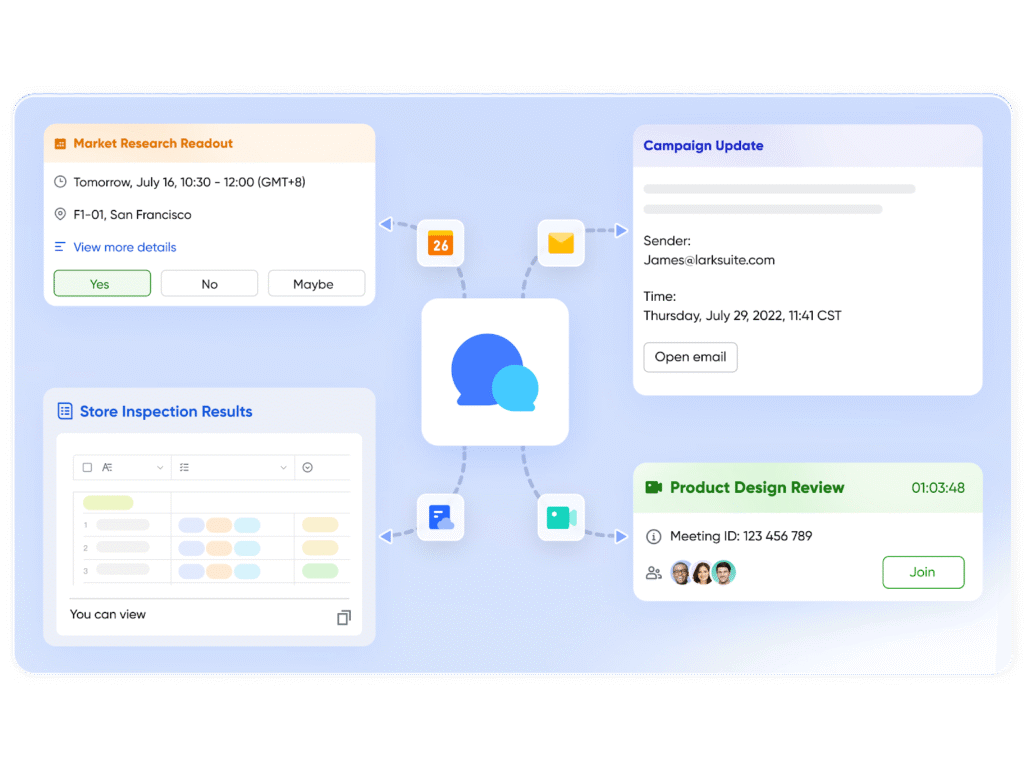
Lark Messenger
When the system is down, people only talk to each other in their own groups. You never add a quick choice from one chat app to the task tracker, and by the time you write follow-ups, you don’t remember the details. Lark Messenger fixes this by connecting discussion to action right away.
With Messenger, conversations don’t just stay the same; they change. You may turn a designer’s perspective about a client brief into a task right away. You can pin, share, and link to documents that are linked to a project update. You can no longer use Messenger as a separate app; it is now the route to get to connected work. For teams that are buried in endless chat threads on different platforms, the difference is huge: conversations don’t get lost anymore; they keep things moving.
Lark Base: Replacing fragmented trackers with adaptable structure
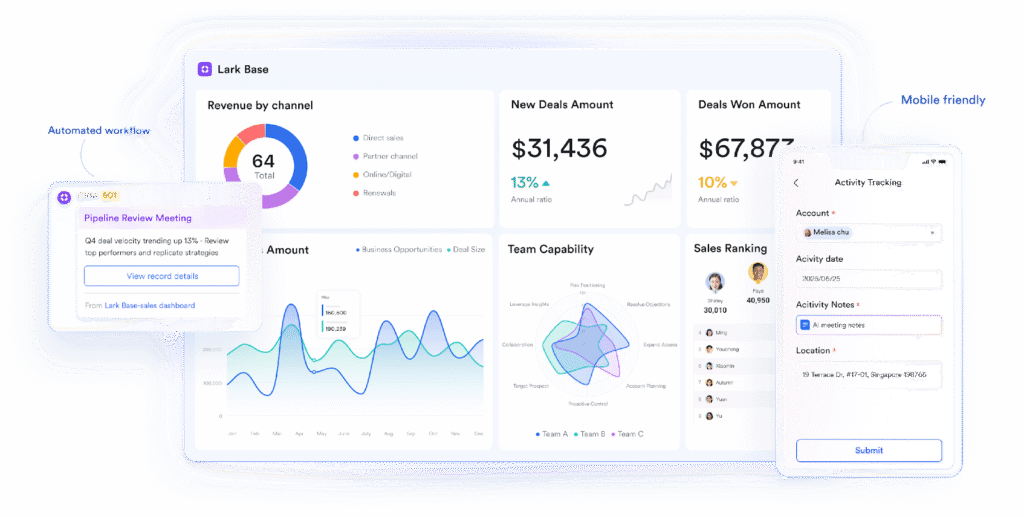
Lark Base
Most of the time, spreadsheets, kanban boards, and databases from other organizations don’t connect to the rest of the organization’s work. Teams waste hours updating one system, moving data to another, and emailing stakeholders to fill in the gaps. Lark Base solves this problem by offering each team a database that they may change to fit their needs and that is still connected to everything else on the platform.
For example, sales teams often utilize CRM app, which can be costly and take a long time to switch. Similar to that but different from the awkward practice, Lark Base links client information to project deliverables, chats, and meetings that are already scheduled. Instead of having to export updates to another program, they travel effortlessly through the system. Marketing, sales, and operations don’t have to keep track of different things anymore. Instead, they all use one adaptable hub where they can see everything right away and there is no duplication.
Lark Approval: Making decisions without the bottlenecks
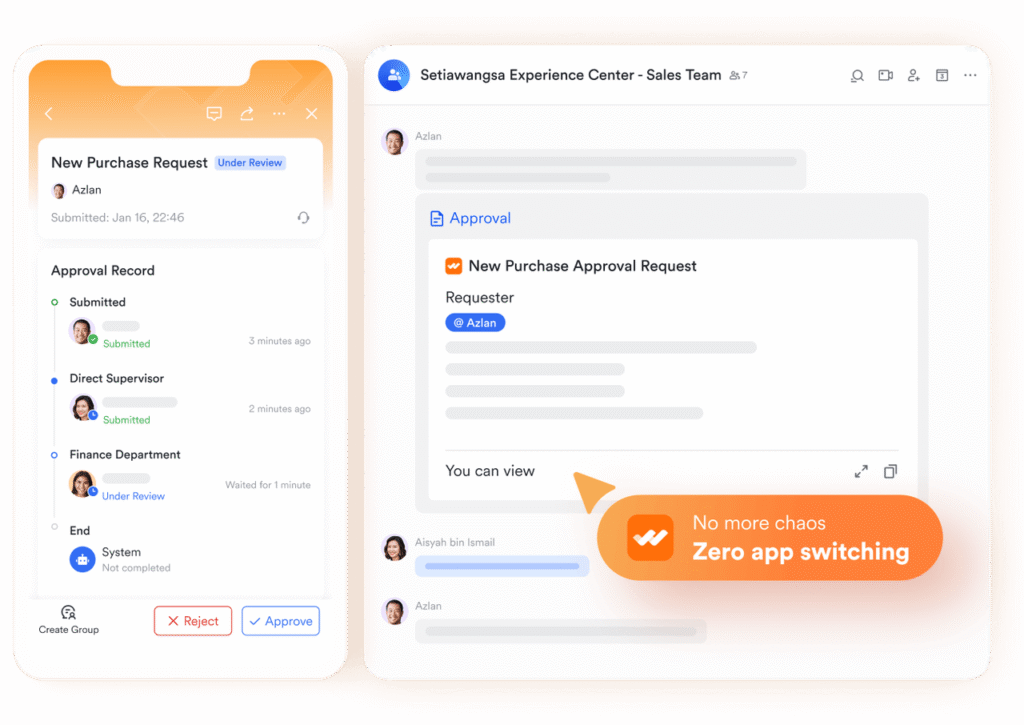
Lark Approval
Getting approvals is often the trickiest aspect of patchwork installations. Expense claims sit in an inbox, project proposals travel back and forth between managers, and employees wait days for a “yes.” Not only is this delay frustrating, but it also costs money.
Lark Approval cuts out the need for that by sending requests directly to the right people on the same platform. A worker can fill up a form, and managers will be told right away. For the sake of openness, decisions are also automatically logged. Things that used to take days now only take hours. Approval also supports an automated workflow, which means that things like sending reminders, changing records, or moving overdue requests up the line happen without you having to do anything. This not only speeds up the process of making decisions, but it also makes things run more smoothly every day.
Lark Calendar: Ending the scheduling shuffle
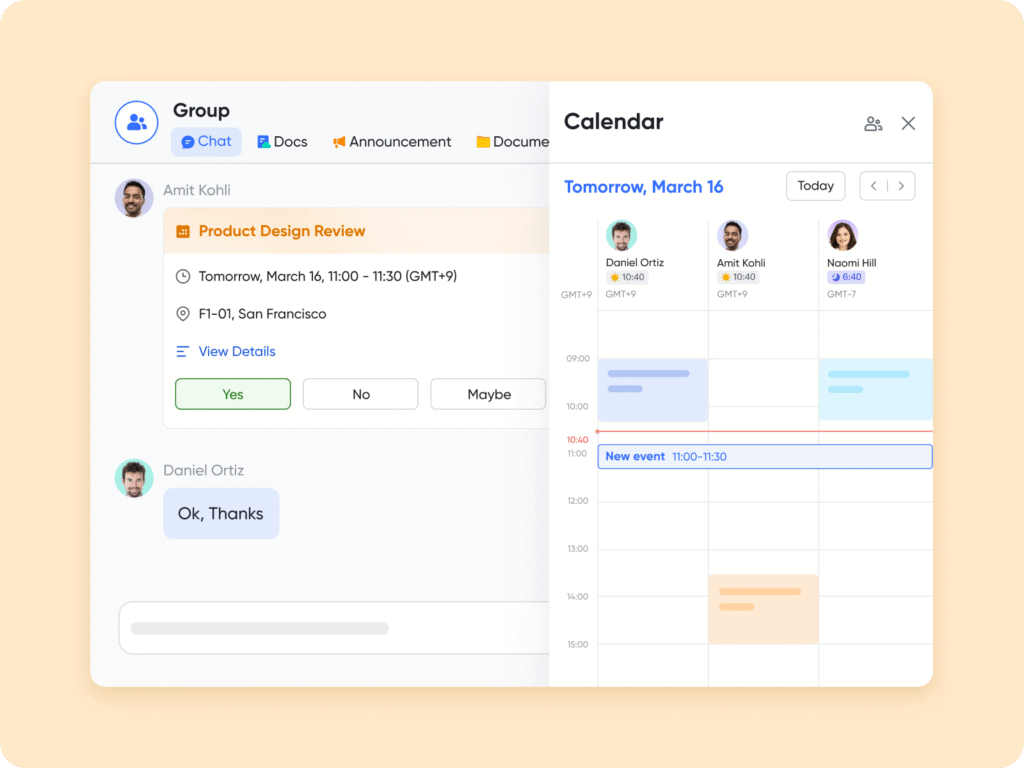
Lark Calendar
In a patchwork situation, scheduling is hard since you have to send and receive a lot of emails, invitations, and reschedules. Different tools handle different parts of the process, which could cause teams to have schedules that don’t match and miss meetings. Lark Calendar fixes this by bringing all of your time management in one location, along with your tasks and messages.
When you upload a project milestone to Base, it shows up in Calendar right away. The invite has linked Docs, so everyone is ready for the meeting. Changing the time zone makes it easier to work with individuals all around the world, and reminders help people remember to show up. Instead of wasting time attempting to get everyone on the same page with different tools, teams just use one schedule that everyone can see.
Lark Docs: Replacing file chaos with living knowledge
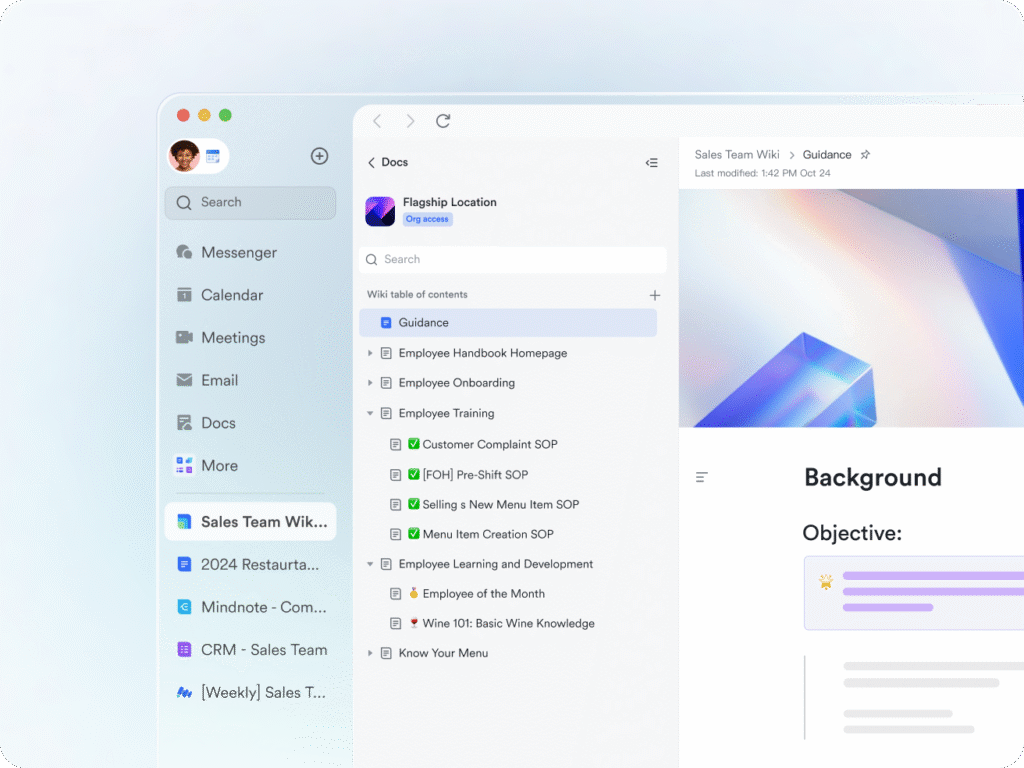
Lark Docs
Patchwork systems often keep documents in a variety of places, such as file drives, email attachments, and apps that are not on the computer. Version management turns into a headache, and you waste hours just attempting to find the most recent file. Lark Docs fixes this problem by turning documentation into a living, shared space.
Teams can work on documents together in real time, leave comments, and connect them to tasks or project records. For instance, a campaign draft doesn’t just sit in an email; it evolves all the time since it’s related to the projects it supports. The result is not just better documentation; it’s knowledge that is put to use right away, which cuts down on wasted effort and duplication.
Lark Meetings: Turning time together into progress
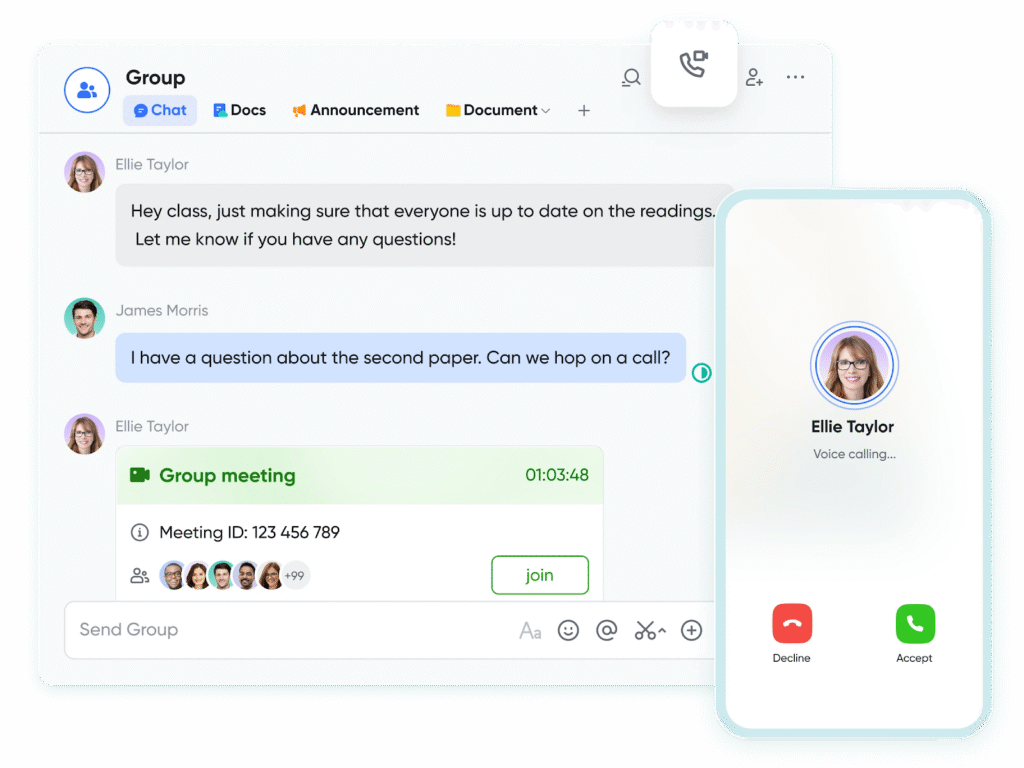
Lark Meetings
In fragmented arrangements, meetings are usually not part of the other tasks. You have one app for your duties, another for your notes, and a third for your agendas. What went wrong? There are meetings, but the results don’t last long.
After Lark Meetings, you can do something immediately away. You can join teams immediately from Calendar or Messenger, share screens, and work on Docs together in real time. You can assign them chores to do after the call ends, and the recordings are saved for later use. Meetings in Lark don’t add to your workload; they help you get things done. They stop being about “talking” and start being about creating a change.
Lark Tasks: Anchoring accountability where work happens
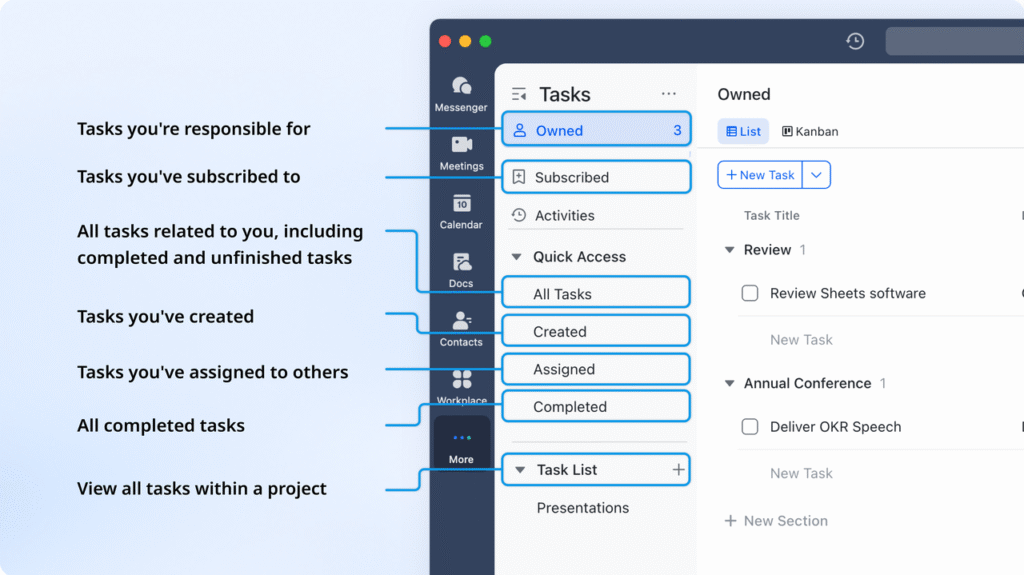
Lark Tasks
People often add to-do lists and task trackers to other platforms, which makes it challenging for teams to understand the big picture of what they need to achieve. People forget about things they need to do because they are on the wrong app. Lark Tasks fixes this by putting responsibilities in the same place where you can chat with others, write down what you need to do, and plan your day.
When a project choice is made in Messenger, a task is made. When you specify a deadline, Calendar automatically aligns up with those tasks. From Base, managers can check how things are going and not miss anything. Instead of dividing chores out among apps, Tasks integrate them into the flow of work. This makes it easy to tell who’s in charge and cuts down on costly delays.
Conclusion
Patchwork systems may seem like a smart idea at first, but often contain hidden costs like lost data, extra effort, and wasted time. Centralized platforms like Lark fix this problem and make things explicit. They make sure that information travels right to impact by placing all of the conversations, projects, approvals, files, schedules, and activities in one location.
Messenger makes sure that talks get things done. Base offers you a structure that may alter, Approval helps you make decisions faster, Calendar keeps everyone on the same page, Docs keep knowledge protected, Meetings make sure everyone knows what to do next, and Tasks keep everyone responsible. They show that centralized tools are more than just a better way to use apps; they are the future of business flexibility.
Companies can’t afford the challenges that come with a patchwork approach in a world where speed and clarity are what make a corporation competitive. It’s evident what needs to be done: bring everything together, connect it, and make each idea work out seamlessly.


